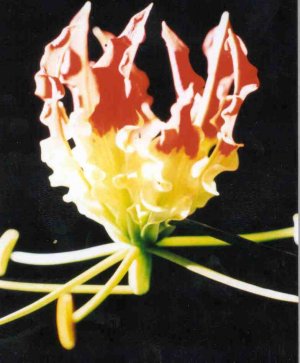
Home | Biodata | Biography | Photo Gallery | Publications | Tributes
Nature Study

 |
Home | Biodata | Biography | Photo Gallery | Publications | Tributes Nature Study |
 |

Two types of trees have been recognized in this part of the country from early times and the first is the familiar one, which comes under the category of flora. The second type refers to a person who stands exposed as a fake in the assembly of scholars and Selaiyur certainly has been a great assembly of scholars! Some in Selaiyur as elsewhere, have remarkable growth in a short period and there are others who have not grown much even though they have been there for years. There is a kind which is native both to India and Africa and another shady specimen near A block which was introduced from Malaya .....so tall and handsome but useless otherwise. At the entrance there is an evergreen believed to be from Australia. Some are often attracted by butterflies and get heavily parasitized. Some can be recognised by their smell even at a distance and some others inconspicuous but strong and durable. Another remarkable one, a native of Africa, is close to Selaiyur but is not within the four walls of the Hall. Some kinds have remarkable properties of curing all sorts of ailments and some others even in small quantities, make one sick.
Now we shall mainly concern ourselves with the first type of trees which are known by their long scientific names. The Golden Cassia (or konnai in Tamil) puts forth its spectacular cascades of golden yellow flowers in June and there is a fine specimen in the warden's garden. A few more such trees are found in the lawn in front of the Hall. The black pods of the tree are long and cylindrical like the drumstick and the poets of the Sangam age have compared the long tresses of girls to these pods. When the flowers begin to fade, their odour is that of the girl who pines for her man. This is what is claimed by another sangam poet and the SENATOR will certainly be interested in checking the accuracy of this claim. This Cassia is not eaten by goats or cattle but is heavily attacked by caterpillars. The sweet pulp of the fruit, taken in small quantities, is a mild laxative but in large quantities leads to disastrous results including nausea.
Closely related to this tree is the Pink Cassia with the same sort of long black pods and two of these trees are in the lawn between the Hall and the warden's house. Near these Cassias are two bushes of Lignum Vitae or Tree of Life, introduced from Brazil. The famous Calabash tree from Africa which produces hard coconut-like fruits is a familiar sight in the warden's garden. These trees remind us of the tireless service of Professor and Mrs. E. Barnes and their loyal band of gardeners to the College.
Very close to the mess are a pair of Bulletwood trees (mahilam in Tamil) which are evergreen and produce small white flowers which are very fragrant. In a place like this, enterprising young men must be able to put to use these flowers which are highly sought after by women. A decoction of the bark is used as a mouthwash in diseases of the gum and the dried flowers are used as snuff to relieve headache. This tree which gives such fragrant flowers has very strong and durable wood. Another strong indigenous tree is the Ironwood tree some of which are found in all the four corners of the quadrangle. Its wood is stronger and harder than teak, is resistant to water and white-ants and is too expensive for general constructional work.
The central lawn has some Gold Mohur trees indigenous to Madagascar and Yellow Gold Mohur trees that are from Ceylon. The Gold Mohur with its bright red flowers and sword-like pods and the Yellow Gold Mohur with its bright yellow flowers and small rusty-coloured pods are our commonest flowering trees on the campus. Supporting the Bougainvillea (or paper flower) climbers are the Indian Ash trees whose old scientific name odina woodier is derived from the Tamil name odhiya maram. Its bark is used as a lotion for ulcers of leprosy and a decoction of the bark is used for toothache. Near the indoor theatre is the tall and shady Parkia tree which is identified by its flower heads resembling the badminton balls and this is a native of Malay peninsula where badminton is so popular.
The P.G. House boasts of two Pride of India trees which bloom in April and an Indian Butter (or illuppai) tree whose edible flowers are rich in vitamins and sugar. These flowers are extensively used for distilling liquor and the oil from the seeds is used in the manufacture of soap.
At the entrance to the Main Hall is the Pine tree called araucaria. It is evergreen and much prized as a pot plant and is a native of Pacific Australia and South America. On the other side of the main entrance is an Indian Walnut or vaahai tree and this is a native of tropical Asia and Africa. In the sangam period garlands of vaahai flowers and foliage were worn by the victorious armies of the Tamil kings. The only reason we cannot use them during the Sports Day is that the tree does not start blooming that early!
There are many kinds of trees in Selaiyur and each one is interesting and worth individual study. All these from the different parts of the world thrive in the soil of Selaiyur and are an asset to the Madras Christian College.